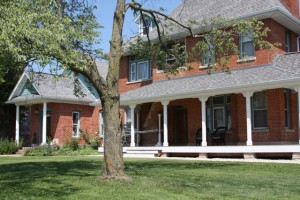
Wallace House was built in 1885. It became the Methodist Church in 1928 until it was later sold. Today, it is restored and used for special events.
Although Viva Cuba has commissioned public art and created many plantings to enhance Cuba, Missouri‘s beauty, one of the most enduring forms of beauty is the preservation of its buildings, locations, and culture.
Wallace House, built as a private residence in 1885, has a rich history. It was sold to the Methodist Church in 1928. In 1940, Harry Truman stood on the steps of what was then the Methodist Church to make a speech when he was running for the senate. When the church was sold , a group bought it and carefully restored it, and it is used for private events. It creates a timeless beauty on the corner of Smith and old Route 66.
The Kinder Cemetery on the West end of Cuba, Missouri was established in 1832 and has been carefully maintained. The iron fence around the area and other decorative features make it a serene and beautiful setting as the final resting place for some Cuba’s founders. Much of Cuba’s history reposes here.
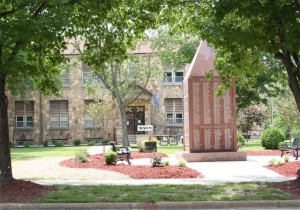
The former public school building was built in 1934 by the WPA program and was used until 1960 as a school.
At 308 N. Smith Street in the Recklein Commons Area, you will find the Crawford County History Museum that is housed in a stone building. With its “Three Floors of History,” it is a perfect use of one of Cuba’s historic buildings. The green space in front of the museum is the home of the Veterans Memorial, which holds the names of almost 1000 Cuba citizens who served their country from WW I on. The memorial was built with corporate and individual donations in a 2-year fundraising effort spearheaded by brothers Phil and W.D. Mullen to remember the sacrifices of Cuba’s veterans.
Holy Cross Catholic Church ,as it stands today ,was built on land purchased in 1924 by Father Hornsey with his own funds. The church was built in 1936 with the rock wall, rectory, and other church buildings added later. The church and school grounds are an example of the functioning preservation of Cuba’s history.
Cuba is not just about the murals and other art throughout the town. Founded in 1857,Cuba is a sesquicentennial town with a rich history. That history is revered by the citizens of Cuba, and many have made efforts to retain the historical buildings and give them a dignified use. Cuba is a town where art meets history to create a special type of ageless beauty.
To get more information about the historical buildings and residences in Cuba, Missouri pick up the Historic Preservation Commission’s brochure at the Visitor Center. It highlights the historical revitalization in Cuba.
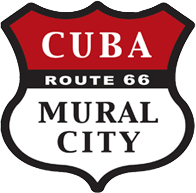
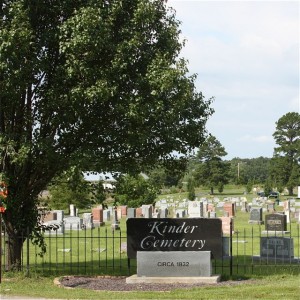
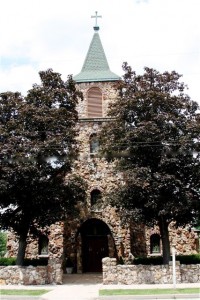


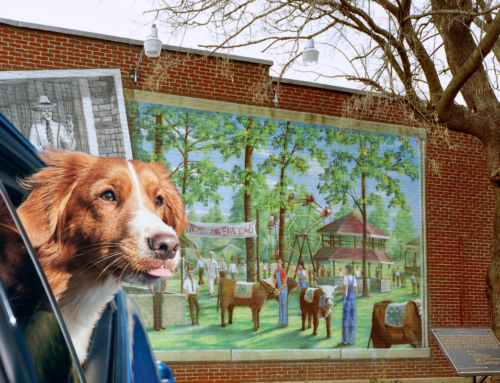
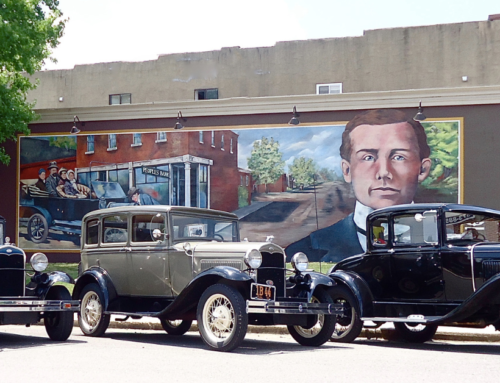


Thank you Jane! This is a beautiful piece.
Jane, this may not be the place to post this note but Huffington Post has an article which has four photos of abandoned places in Texas that were located on the old Route 66. These can be accessed by logging on to http://www.huffingtonpost.com.news/abandoned-home/ and clicking on the article “Abandoned America at Night”. When I saw those four photos, I thought this might have been in store for businesses fronting Route 66 in Cuba had not concerned people stepped up.
Thanks, Wayne. Everyone who steps up to resurrect Cuba’s old buildings should be commended and their businesses patronized. They help to keep the character and culture of the town.